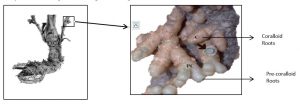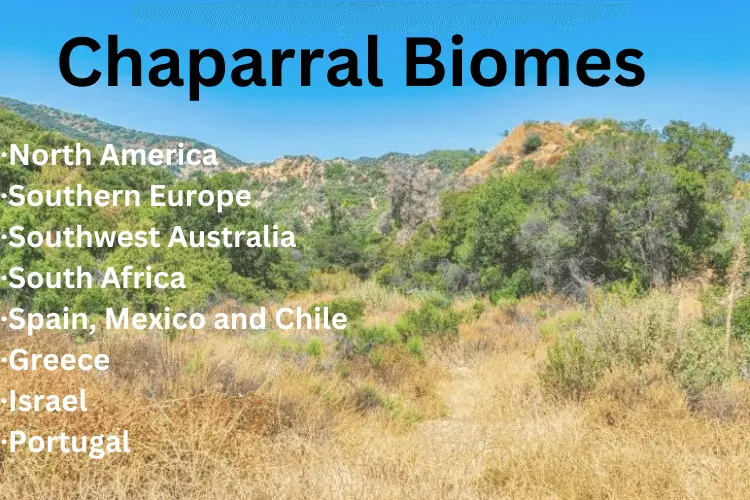Cycadales/Cycads: Introduction, Origin, Characters, and Affinities
Introduction to Cycadales:
Cycadales or cycads “living fossils” are member of gymnosperms (naked seeded plants). This group consists of 11 living genera and more than 100 species. This group contains both extinct and living (extant) genera. They dominated the world in the Jurassic period. These are present in tropical, subtropical, and warm temperate regions of the world including America, Australia, China, Japan, Sri Lanka, India, Madagascar, Africa, etc. Members of this group love to live as xerophytes, and halophytes, living in rainforests, swampy and shady areas. They are extremely ancient plants.
Cycads have been reported to fix nitrogen (N) in their roots in association with blue-green algae (cyanobacteria). These blue-green algae also produce a neurotoxin Beta-methylamino-L-alanine (BMAA). This neurotoxin has also been found in seeds and thus in the human food chain. This is assumed to be a potent cause of neurological disorders in humans.
Phylogeny of Cycads
“The evolutionary history of a taxonomic group or an organism is termed as phylogeny”. This taxonomic group “Cycadales” is believed to be originated from Pteridospermales, also known as cycadofilicales or seed ferns. The stem possessed a large protostele surrounded by several small-sized steles. This character is in resemblance to monastic and polystelic Pteridospermales. Some cycas like megasporophylls were also discovered in the lower Permian period of the Palaeozoic era.
According to Worsdell, Cycadales originated from the Medulloseae family. The vascular organization of Cycas siamense and Medullosa porosa show a close resemblance. They appeared first in Upper Triassic times, and are present even today. Seward (1933) has mentioned that “the cycads of today may rightly be called “living fossils” because they come down from the remote past with so little change that if a man from Cretaceous is brought today, he would very easily recognize the modern living forms of today”. One of the living fossils Chigua has recently been reported by Stevenson in 1990 from South America.
General Characteristics of Cycads:
- Woody plants resemble palms of casual observation.
- They have a cylindrical stem
- They bear crowns with large palm-like leaves
- They are naked seed plants (gymnosperm) with seeds attached to modified leaves called sporophylls.
- The plant body is sporophytic, differentiated into roots, columnar and unbranched stems, and pinnately compound leaves.
- Members of this group exhibit xerophytic characteristics and grow only 2-2.5 m in one thousand years.
- Young leaves show circinate vernation..
- Wood is monoxylic.
- Apical meristem is massive.
- Mucilage canals are present in the pith and cortex.
- Leaf traces are diploxylic.
- The reproductive organs of plants are cones, terminal in position.
- Plants are dioecious.
- The Cone axis in the male cone has microsporophylls with microsporangia.
- Male gametes are very large measuring 80 µm in Microcycas to as large as 400 µm in Chigua. Cycas revoluta have 180-210 µm long male gametes.
- Megasporophylls are leaf-like with 6-8 ovules (fig 4).
- Ovules are orthotropous.

Classification of Cycads
Sporn in 1965, classified two families; Nilssoniaceae (fossils), and Cycadaceae (living). Bierhorst classified three extant (living) families i.e. Cycadaceae, Strangeriaceae, and Zamiaceae.
Genera include;
Bowenia (Fig. 1a)
Ceratozamia, Chigua, Cycas (Fig. 1b)
Dioon (Fig. 1c)
Zamia (Fig. 1d)
Encephalartos, Lepidozamia. Macrozamia, Microzamia, Stangeria (Fig. 1e)

Morphology
Plant Body of cycads
- The plant body is heterosporous.
- The stem is columnar with very little branching. The stem is soft, thick and slow-growing
- There are cones at the apex of the stem.
- Spirally arranged leaves at the top of the stem. Leaves are pinnately compound with circinate vernation. Leaflets have distinct midribs. Leaves persist for 3-10 years but leaf bases can stay longer for many decades on a stem.
- Roots are coralloid in nature. These types of roots grow upward near to soil surface. These are highly branched. Cyanobacteria (blue-green algae) inhibit these highly branched roots to carry out the nitrogen fixation process (fig 2).

Reproductive parts of cycadales/cycads
- Insects (weevils) help in the pollination of cycads. These pollinators mate and lay eggs within the female cone.
- All cycads are dioecious with separate male and female plants. Male plants are rare and produce pollen cones while female plants produce seed cones (fig 3). Male cones are the largest among all gymnosperms and are terminal with a compact central axis and bear numerous microsporophylls. Microsporophylls are wedge-like containing several hundreds of microsporangia in the broader end.

- Megasporangium is a simple conical structure with distinct fertile and sterile regions.
- All living genera of cycads (except cycas) have compact female cones with megasporophylls arranged compactly around a central axis. A bud near the base of the female cone pushes the cone to one side. This type of growth is called sympodial growth. Cycas have spirally arranged megasporophylls (loose megasporangiate zone). This is called monopodial growth. Cone size may vary from 2 cm (Pygmea) to 2 feet (Dioon). Megasporophylls have a distal sterile laminate portion and a stalk. It bears 2-3 ovules. Ovules have micropyle to accept pollens.
- Microsporangium has a massive wall enclosing several microspores. Each microspore contains two layers, outer-exine, and inner-intine with a big centrally located nucleus and dense cytoplasm. Microspores germinate with microsporangium.
Anatomy of Cycades
Here, we will discuss anatomy of leaf and stem.
Anatomy of leaf
The leaf epidermis has cuticle layers, and sunken stomata (haplocheilic) for water conservation. The midrib is un-branched, and transfusion tissue is seen on either side of the midrib.
Anatomy of stem
The stem is roughly circular in the outer line. It contains a wide cortex and central pith. Leaf traces are present. Vascular bundles are conjoint and collateral. Mucilage canals run parallel to stems. Wood is monoxylic.
Anatomy of roots:
Affinities of Cycadales
Cycadales show a resemblance with Pteridospermales, Bennettitales, Ginkgoales, Cordaitales, and Pentoxylales.
The resemblance of Cycads with Bennettitales
Bennettitales, a group of fossil gymnosperms has a very close relationship with Cycadales. Even Bennettitales was named Cycadeoideales by some taxonomists.
- Fronds of both groups are pinnately compounds
- 2) Stem is short and remained covered with persistent leaf bases.
- 3) Cortex is thick and well-developed.
- 4) Pith is wide
- 5) Secondary wood is monoxylic
- 6) Embryo is dicotyledonous
- 7) Both groups are dioecious
- 8) Some species have bisporangiate synangia.
The resemblance of Cycads with Pentoxylales:
Both groups have;
- ) Tree-like habit
- 2) Presence of syndetocheilic and haplocheilic stomata.
- 3) Both groups show centrifugal and centripetal xylem in leaf traces.
- 4) Unisexual reproductive organs and monolete type of microspores
Differences between Cycadales/cycads and Pentoxylales
- Leaves are simple in pentoxylales while Cycads bear compound leaves
- 2) Wood in Pentoxylales is pycnoxylic while Cycads have monoxylic wood.
- 3) Stele is polystelic in pentoxylales but monostelic in Cycads.
- 4) Ovules remain free from nucellus in Pentoxylales while remaining fused with nucellus in Cycads.
Resemblances of Cycadales/cycads with Cordaitales
- Both groups are xerophytic in nature.
- 2) Pith and cortex are massive.
- 3) Abundant sclerenchyma
- 4) Ovules have integuments
- 5) Vasculature and structure of the seed are similar.
Differences of Cycadales with Cordaitales
- Presence of pycnoxylic wood in Cordaitales
- 2) Cordaitales have simple leaves
- 3) Strobili are compounds in Cordaitales.
Resemblances of Cycadales with Ginkgoales
- 1) Structures of their apical meristems are similar.
- 2) Both groups have multi-ciliate spermatozoids.
- 3) Well-developed female gametophyte with a large center and massive egg.
- 4) Embryos are dicotyledonous in nature.
For more information, please visit botanylive.com
I’m Dr Qaiser Maqsood (PhD), a dedicated researcher and expert in Biological Sciences, Gardening, Bio-Diversity, Ecology, and Environmental Sciences. I’m much concerned about Environmental Pollution, Climate Change, Plantation, Gardening, and Global Warming. My passion is to explore innovative solutions in all these fields.
Be aware that we have ONLY ONE EARTH. Protect it!!






